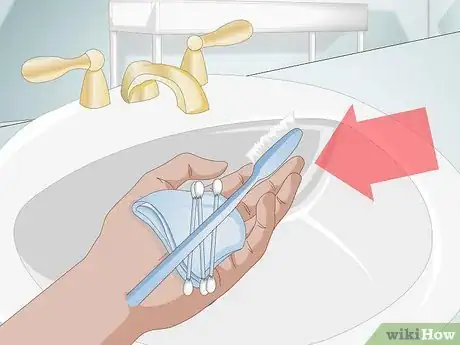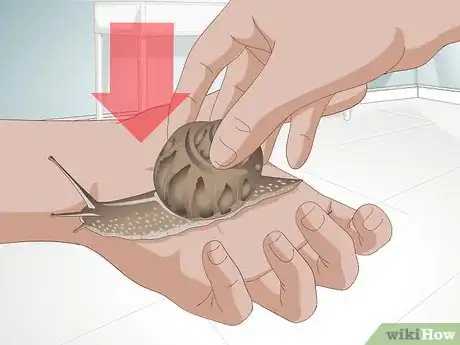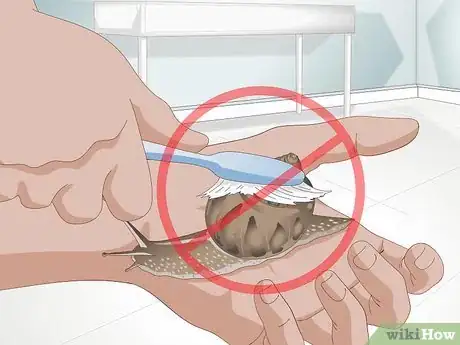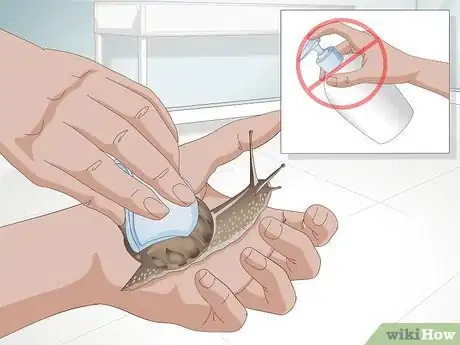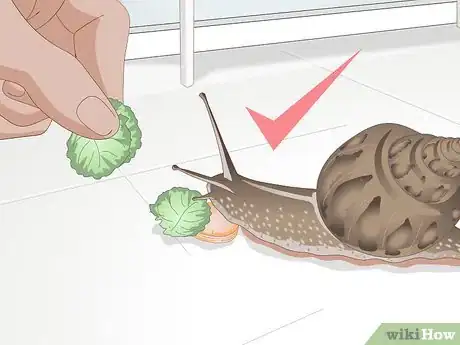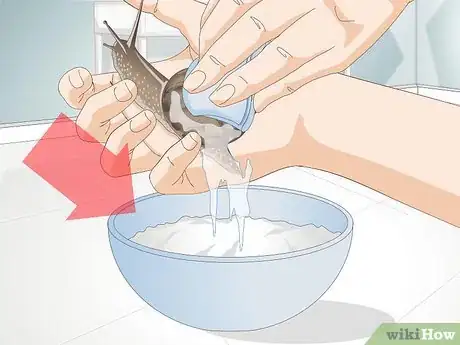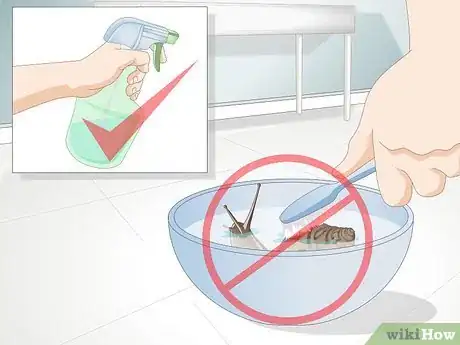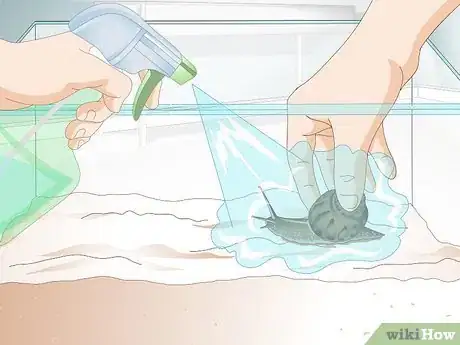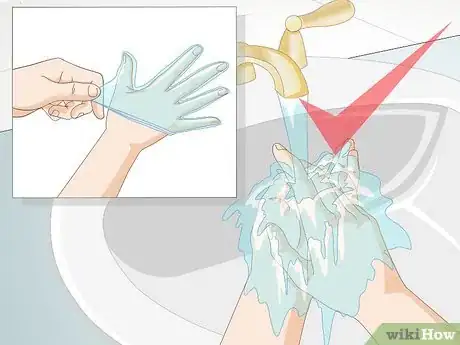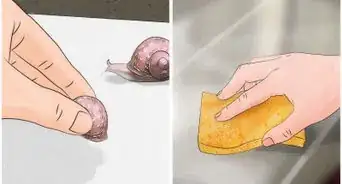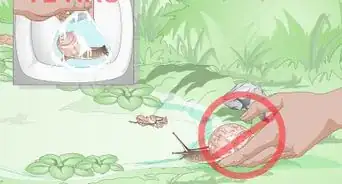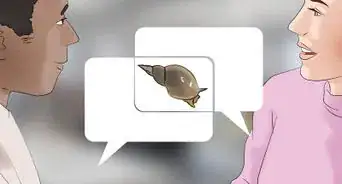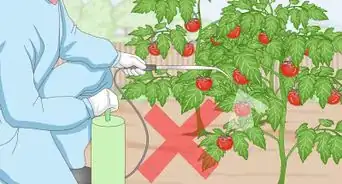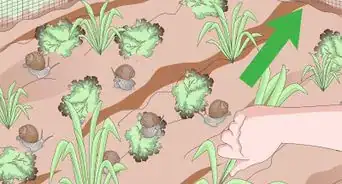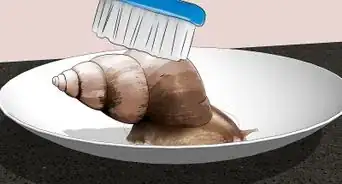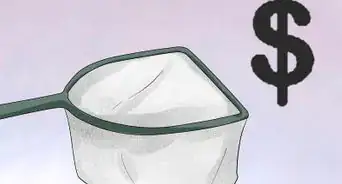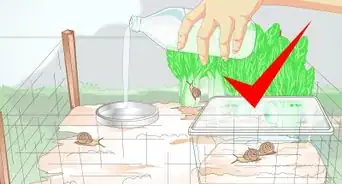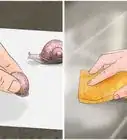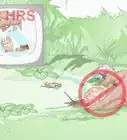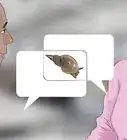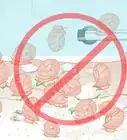This article was co-authored by wikiHow Staff. Our trained team of editors and researchers validate articles for accuracy and comprehensiveness. wikiHow's Content Management Team carefully monitors the work from our editorial staff to ensure that each article is backed by trusted research and meets our high quality standards.
wikiHow marks an article as reader-approved once it receives enough positive feedback. In this case, 92% of readers who voted found the article helpful, earning it our reader-approved status.
This article has been viewed 49,999 times.
Learn more...
Garden snails make great pets because they are low maintenance, easy to care for, and inexpensive to maintain. You do need to change your snail’s food daily and clean their shell regularly to remove dirt and small pests. If you're caring for a garden snail, part of your cleaning routine will include making sure that your snail's shell is clean, undamaged, and that it stays in top shape.
Steps
Washing Your Snail’s Shell
-
1Choose whether you’ll use a soft cloth, a cotton swab, or a soft-bristled toothbrush. Each of these tools has their own merits, and which tool you choose depends on what kind of cleaning your snail’s shell needs. No matter what tool you use, make sure that it’s unused and free of any chemicals or detergents.[1]
- If you need to do more specific, detailed work, the cotton swab is the best choice.
- If you want need to do a more genera wipe-down of the snail’s entire shell, a soft cloth or thick tissue will be best.
- If your snail’s shell has algae or other material that you need to scrub off, a soft-bristled toothbrush might be your best choice.
-
2Hold your snail in the palm of your hand. You’ll hold your garden snail in the palm of your non-dominant, and then you’ll use your cloth, soft-bristled toothbrush, or cotton swab with your dominant hand. Make sure to hold your snail in the palm of your hand and in a good position so that no water gets inside the shell.[2]
- You can entice your snail to walk on to your hand by putting your finger flat near its head or by placing a small bit of food in the palm of your hand.
Advertisement -
3Don’t apply too much pressure. A snail is a mollusk, which means that your garden snail is a delicate invertebrate that relies on its shell for protection. And while snail shells have firm outer layers, the inner layers have varying softness, porousness, and flexibility, and the shell is not one solid, thick, indestructible structure. Take care to handle your snail gently, never pressing down on their shell, because the shell can easily crack.[3]
- It’s a good idea to never pick your snail up with your fingers, instead just let them walk on to your hand.
-
4Wash your snail’s shell. Cleaning algae and other debris from your snail’s shell will likely improve its health and overall quality of life. Consider that snails like to eat decaying food, which is full of bacteria, which you’ll need to remove regularly. Use the cloth, tissue, cotton swab, or soft-bristled toothbrush to wipe the shell and remove dirt and droppings off of it.[4]
- Don’t use soap or detergents.
- Make sure you get everything off, including cleaning the underside of the shell.
- Hold your snail in the palm of your hand non-dominant hand while cleaning with the dominant hand.[5]
-
5Rinse your snail off. You need to rinse your snail off, possibly more than once, to make sure that the shell is clean and to remove any debris that you dislodged. Pour warm water on the shell while holding the snail over a bowl. Or, if you’re uncomfortable with pouring water over your snail’s shell, simply fill a new, clean spray bottle with purified water and spray the shell.[6]
- Garden snails are land snails, meaning they aren’t able to breathe under water. Take care that you don’t pour water over your snail’s head. Remember, you’re only cleaning the shell.
- Do not put water in the snail’s shell as your snail could drown.
- Let the shell air dry.
-
6Reward your snail with a snack. Garden snails love to eat plants, vegetables, fruits, and algae, and any of these make a great snack. Whichever snack you choose to reward your snail, keep the treat small so that you don’t overfeed your pet. Occasionally, garden snails even like a small drop of beer.[7]
- Snails are naturally attracted to foods that are high in calcium, because they need the mineral to build their shells.
- Collard greens, kale, spinach, leeks, butternut squash, broccoli, and artichokes are all great sources of calcium.[8]
Taking Necessary Precautions with Your Snail
-
1Give them a soft landing. You’ll clean your snail over a bowl so that you can catch the water that falls off of them, and, more importantly, so that they have a specific space in which to land should you accidentally drop the snail. Protect the snail’s fall by filling the bowl with dry substrate, the same that you use in their tank, which will give a soft landing if your snail should fall.
-
2Don’t drown your snail. You will need to rinse your snail with warm water several times in the cleaning process – twice at the minimum, but likely more. Land snails, such as garden snails, can drown fairly easily, and you cannot under any circumstances put them under water. A great way to avoid any risks of drowning is to use a spray bottle to apply water to your snail’s shell rather than pouring water over them.
- A spray bottle filled with warm, not hot, water will give you better precision when applying water to your snail’s shell.
-
3Don’t pull on your snail. When you pick up your snail, use a spray bottle filled with warm water to gently mist the snail. Your goal isn’t to lubricate the snail, but simply to encourage it to move. More domesticated snails may not need this stimulation. Put your finger down in front of the snail’s path so that it climbs on to your finger or hand.
- Never pull a snail up by its shell. Snails create suction and you could seriously injure the animal by pulling on it.
- You also want to avoid handling snails by their shells because you run the risk of applying too much pressure and cracking their protective shell.
-
4Wash your hands or wear gloves. Any time you touch your snail, wash your hands afterward, and consider wearing gloves when you bathe your snail. Never let a child touch a snail unattended, either, as they may forget to wash their hands before touching their face, eyes, nose, or mouth. Snails can pass along a host of potentially threatening issues, such as salmonella, parasites, like those that cause meningitis, and other bacteria.[9]
- Snails make great pets, but you do need to take necessary sanitary precautions when handling your pet.
- If you handle your snail without gloves, make sure that you don’t have lotion or perfume on your hands, which could be harmful to the animal.
Community Q&A
-
QuestionCan I use a washcloth to clean it?
 Community AnswerAs long as the washcloth is not used for anything else and you are very gentle and don't use soap, a cloth would be fine. However, the above methods would allow for more accurate cleaning.
Community AnswerAs long as the washcloth is not used for anything else and you are very gentle and don't use soap, a cloth would be fine. However, the above methods would allow for more accurate cleaning. -
QuestionI have three garden snails as pets. I did a lot of research to take care of them properly. I've read over and over that I am not to use tap water because of the chlorine in the water. Is it safe to rinse them under a sink faucet?
 Community AnswerAs long as the water was only touching the shell and not the snail. Or, you can always use an unused toothbrush to wash the snails with your tap water.
Community AnswerAs long as the water was only touching the shell and not the snail. Or, you can always use an unused toothbrush to wash the snails with your tap water. -
QuestionCan I use rubber gloves when handling my snail?
 Community AnswerYes, but they don't seem to like it very much. I would suggest just using your hands and washing them before/after handling the snail.
Community AnswerYes, but they don't seem to like it very much. I would suggest just using your hands and washing them before/after handling the snail.
Warnings
- Do not use soap on the snail, because soap can kill the snail. In fact, soapy water is a way people get rid of garden snails munching on the lettuces.⧼thumbs_response⧽
- Touching the snail anywhere except for its shell with the soft-bristled toothbrush may be harmful to it.⧼thumbs_response⧽
Things You'll Need
- New soft-bristled toothbrush, a cotton swab, or a thick tissue or soft cloth
- Sink or beaker/cup with sink water in it
- Pet garden snail
References
- ↑ http://www.petsnails.co.uk/care/cleaning.html
- ↑ http://www.molluscs.at/gastropoda/index.html?/gastropoda/morphology/shell.html
- ↑ http://www.molluscs.at/gastropoda/index.html?/gastropoda/morphology/shell.html
- ↑ http://www.petsnails.co.uk/care/cleaning.html
- ↑ http://www.molluscs.at/gastropoda/index.html?/gastropoda/morphology/shell.html
- ↑ http://www.petsnails.co.uk/care/cleaning.html
- ↑ http://www.petsnails.co.uk/care/feeding.html
- ↑ https://www.healthaliciousness.com/articles/high-calcium-vegetables.php
- ↑ http://animals.mom.me/caring-pet-land-snails-2666.html
About This Article
To wash a pet garden snail's shell, start by holding your snail in the palm of your non-dominant hand. Grab a cloth, soft-bristled toothbrush, or cotton swab in your dominant hand and use it to gently wipe the snail's shell to remove dirt, algae, and droppings. Then, hold your snail over a bowl and pour water over its shell to rinse off the dislodged debris. Once you've thoroughly rinsed off the exterior shell, you can put your snail back into the garden so its shell can air-dry naturally. If you want to reward your snail with a tasty snack, try feeding it various kinds of plants, vegetables, fruits, or algae! For tips on handling your delicate snail safely, read on!
